The reason why it would be better to use diplomacy rather than force is because diplomacy, if done well, allows you to have meaningful inspections, a meaningful and regular battle rhythm of looking around, seeing what’s happening, seeing what violations exist, and in particular, the strategic piece.
Mara Karlin
Mara Karlin, a visiting fellow at Brookings and former U.S. assistant secretary of defense for strategy, plans, and capabilities, discusses the recent U.S. attack on Iranian nuclear facilities, the Israeli-Iran conflict, and what might come next. A key question is how to assess the impact of the military strikes on Iran’s nuclear capabilities.
Transcript
[music]
DEWS: Hi, I’m Fred Dews and you’re listening to The Current, part of the Brookings Podcast Network, found online at Brookings dot edu slash podcasts.
On this episode, a focus on the recent U.S. bombing of three nuclear sites in Iran, the continuing conflict between Israel and Iran, and what comes next. Here to discuss these issues is Mara Karlin, a visiting fellow with the Strobe Talbot Center for Security, Strategy, and Technology in Foreign Policy here at Brookings. Dr. Karlin has served in national security roles for six U.S. secretaries of defense, advising on strategic planning, defense budgeting, the future of conflict, and regional affairs in the Middle East, Europe, and Asia. As assistant secretary of defense for strategy, plans, and capabilities, she led the development and implementation of the 2022 National Defense Strategy, Nuclear Posture Review, and Missile Defense Review. A great guest to talk about these issues.
Mara, welcome to The Current.
KARLIN: Thanks for having me, Fred.
DEWS: So it’s early Tuesday afternoon, June 24th here in Washington, D.C. as we’re taping this. So by the time this airs, much could change. But I’d like to focus on what we do know and what your expert perspective on it is. So can you first update listeners with a high level view of what the most important events have been in the U.S. and Israeli attacks on Iranian nuclear sites?
[1:24]
KARLIN: So about a week and a half or so ago, the International Atomic Energy Agency censured Iran for the first time in about two decades, saying that they weren’t quite following the rules that they had agreed to regarding nuclear inspections. That evening, the Israeli military started its attack on a wide range of Iranian sites, including nuclear sites, including military infrastructure, hitting personnel targets, whole bunch of things. And that lasted for about a week or so.
And then on Saturday night, the United States became involved. And on Saturday night, the United States military hit three of Iran’s nuclear sites. And then we saw the Iranian retaliation with about 14 or so missiles attacking the U.S. military base in Qatar.
And finally, over the last 24 hours or so, it appears after a little bit more back and forth, all three countries have agreed to a ceasefire. It seems a little bit tenuous, but it appears to be holding for the moment.
DEWS: And also, part of the larger context here is that in, I believe it was July 2015, the Obama administration and a few other nations negotiated with Iran the Joint Comprehensive Plan of Action, or the so-called Iran Nuclear Deal, that the first President Trump administration withdrew from in 2018.
[3:01]
KARLIN: That’s exactly right. So I think what you’re really asking is how did we get here? Because we did not have to get to the phase of using military force. So for probably about two plus decades or so, a number of countries, including the United States, said Iran can’t have a nuclear weapon. And they used a whole bunch of tools in the national security toolkit to make that happen. So sanctions, diplomacy like the JCPOA agreement you noted, there was cyber activity, the Israelis engage in a whole bunch of other things.
And, frankly, what has been the most effective has actually been that deal that you highlighted. President Trump in his first term did pull out of it. And since then we have seen the Iranians make some progress on their nuclear capabilities. So we didn’t have to get here, but this is where we are where the U.S. has used military force against Iran. And now I think we’re all sitting and trying to figure out what’s the battle damage assessment. What has actually been achieved here?
DEWS: How would anyone know whether this nuclear material has been destroyed if there aren’t any inspectors on the ground, for example, to see it?
[4:12]
KARLIN: I think the real dilemma here is has Iran managed to keep and hide enough materiel that in fact the setback has been much more superficial than the president is asserting? And right now we just do not know.
Look, we know there’s been a lot of damage to the nuclear infrastructure. We know there’s been a ton of damage to their military infrastructure writ large. And we also know that the Israelis have hit a couple kind of key state-related institutions—for example, a major prison that’s famous for holding political dissidents. But on the nuclear piece, frankly, short of some really good imagery and some real inspections in a number of places, we’re not gonna know for a while.
DEWS: And without an agreement with, say, the International Atomic Energy Agency, Iran’s not going to let inspectors on the ground to inspect the state of their damaged facilities, right?
[5:07]
KARLIN: Yeah, that’s spot on. Or what they could do is just let inspectors on the ground on the three places that folks really focus on and not let inspectors see other places that folks don’t know about. Over the years, we’ve sort of had these discoveries of these hidden nuclear sites. And I think given recent events, one should probably be a little concerned about the Iranians taking that step as well. So it’s not clear—are they having to completely reconstitute their program? Or do they have some material hidden away in tunnels and now they just need to make progress on that.
Now, to be sure, Fred, this should in no way underestimate just the extraordinary accomplishments of both the Israeli military and the U.S. military. I mean, seeing what the U.S. military accomplished on Saturday night was pretty mind boggling, where you saw B-2s going all the way from the continental U.S., going through multiple air refuelings, you saw the involvement of submarines, of 100 plus U.S. military aircraft going in, coming out after attacking Iran with zero losses and zero casualties. And I would just highlight A, that clearly demonstrates years and years of planning across multiple administrations. And B, no other military in the world could have actually done that operational.
DEWS: It’s clear that the U.S. military has contingency plans for all different kinds of potential operations across the world, and they’ve been doing that for decades. And you worked in the Defense Department and planning for many years. But how does that kind of contingency planning intersect with the political space, the president and the Defense Department officials who were in charge of the DOD, the intelligence community. How does that intersection work? And I will also note that a lot of what we have learned about the military operations we heard from President Trump’s social media posts, including a shout out to a submarine captain from which was launched ballistic missiles.
[7:13]
KARLIN: The way planning works in the U.S. Department of Defense is you’re trying to predict the future. What are the conflicts that might erupt? And in particular, those conflicts in which a future U.S. president might say, I need the U.S. military to get involved and achieve these objectives. And then you think through what are the different scenarios for those conflicts? How might they come together? What would the U.S. role be?
You try to look across the entire U.S. military, so all of the military services, for example. You want to look at all domain capabilities, including cyber and space. And then in building these scenarios, think about what is the most effective way of achieving those ends. The idea is that you want any future president to be able, if they believe it is in line with the national ambition, to turn to the U.S. military and have those objectives achieved.
So what you’re really hearing from me are two pieces. There’s the planning part, right? Like the no kidding how will you make this happen? What are a wide variety of ways you might make this happen? Kind of a longer continuum. You could imagine some that involve hundreds and thousands of troops and some that could involve just, say, taking actions from the air or just in cyberspace.
And then the other piece is that political ambition where you are going to have different presidents who will want to have varying levels of involvement in overseas conflicts. Some will want to work with allies and partners. Some might want the military to be able to achieve these ends on their own. And so it’s a little bit of a dance in making sure variety of options exist as a president tries to make decisions.
DEWS: So, presidents for decades and the U.S. government have articulated a policy that Iran must not acquire nuclear weapons capability. Now, a couple weeks ago, we saw Israel suddenly strike Iran’s nuclear capabilities. And at first, it seemed like President Trump wasn’t part of that decision-making. But as Israel gained momentum, achieved some success, it seemed to some that President Trump kind of jumped into and added the kind of ordnance that only the U.S. military has. Now, that’s still consistent with U.S. policy that Iran must not acquire nuclear weapons, and Iran right now seems to be playing a very weak hand over the past couple of years especially as its proxies like Hezbollah and Hamas have been degraded, Syria has had regime change, Russia is bogged down in Ukraine. So to the critics of the U.S. involvement in this action against Iran’s nuclear capabilities, why continue striking at those capabilities now because that’s been U.S. policy for decades?
[10:04]
KARLIN: It has absolutely been U.S. policy for decades, but there’s different ways to achieve your policy. And look, it has happened. The U.S. has used military force, and I hope it was pretty effective. I look forward to finding out what that battle damage assessment tells us. The reason why it would be better to use diplomacy rather than force is because diplomacy, if done well, allows you to have meaningful inspections, a meaningful and regular battle rhythm of looking around, seeing what’s happening, seeing what violations exist, and in particular, the strategic piece.
So let me give you two examples that are pretty loud in my mind. We have two examples, one in 1981, one in 2007, where a country’s nuclear program was attacked. The first was the Israelis against Iraq. The second was the Israelis against the Syrians. And what we know about the Iraq one is that when the Israelis attacked, the Iraqis went underground and said, we’ve got to try to get this capability. Now, they ended up being thrown off track for other reasons, but at the strategic level, as opposed to the operational level, they really only got more and more motivated.
That was a little bit different in the Syria case where frankly they had had this covert program and had hidden it pretty masterfully from the world. And then you had the civil war break out pretty soon after within Syria. And so they became a bit distracted. This is all a way of saying: you can use diplomacy, then you are able at a strategic level to potentially shape your adversary in a more meaningful way.
But again, we’re in a different ball game now, right?
And now, I sure hope that these attacks were pretty effective. As you know, the Middle East has been transformed over the last year. I think it’s probably been the most transformational year in the region since 1979. With major weakening of Hamas, of Hezbollah, we finally got the removal of the Assad regime in Syria. So all the chess pieces are kind of being moved around. It looks like that’s happening on the right trajectory, but I would always just cautious us to remember it is the Middle East anything’s possible.
DEWS: Well, Mara, what do you think about the reaction that other world capitals might have? Say, President Putin in Russia or Chinese President Xi Jinping? How do you think this involvement of the U.S., of President Trump, might change their perceptions of what President Trump is willing to do on the world stage?
[12:46]
KARLIN: I think they’re probably wrestling between two potentially contradictory reactions. On one side, they’re saying, wow, look at the U.S. military and what it can achieve on its own. At the operational level, the U.S. military, I think, quite amazed them with its actions on Saturday night. And President Trump effectively saying soon after, this is one and done, I’m moving on, I’m going to work to broker a ceasefire, which has now since happened. I think on that side, they’re feeling a little bit amazed and a little bit nervous.
That said, on the other side, both Russia and China are probably wondering if that’s accurate. They have watched other presidents say, I’m not going to get too involved in the Middle East and then of course, end up spending years and years with time, attention, resources focused on it. And so they’re also wondering, is this an opportunity for the United States to really focus on that region as opposed to state competitors like China and Russia?
And so over the coming weeks and months, both Beijing and Moscow are gonna be looking for indicators to help them figure out which path the United States is on. As of now, more the former than the latter, but we will see.
DEWS: Well, as I noted earlier, this is a super fast-moving situation. Who knows what’s going to happen next in the region or who knows what President Trump is going to say? I believe he is, by the time this airs, will probably be in Europe for the NATO summit. What actions and trends are you paying attention to?
[14:26]
KARLIN: I’m trying to look hard at what this 12-day conflict tells us about the changing character of war. So there are a couple things we’ve seen that have existed since time immemorial. Right? So we saw the element of surprise with the Israeli attacks initially. We saw the element of surprise with the United States doing this neat fake out, sending B-2s one way and then B-2s another way.
We see the importance of intelligence. The Israelis penetrated the Iranian system in ways that I think no one could have imagined. We saw the consistency of strategic and operational planning by both the Israelis and the Americans in cooperation with the two of them. The importance of information operations.
And then when we just look at the capabilities used, we saw in particular on the Israeli side an interesting high-low mix. So really sophisticated F-35s paired with drones, for example. So a lot of that, that’s always existed.
What’s sort of the new theme to it for this conflict? For example, information operations. I mean, you were highlighting President Trump and his commentary. We’re seeing on social media how that is influencing the course of the war, it’s influencing deterrence. So I think what we see are some consistent themes across warfare, but some really interesting elements to study from this 12-day conflict in particular.
[music]
DEWS: Well, it’s complex on so many levels, and I’m glad that I’ve had a chance to talk to you, Mara, about some of the issues and to help us understand them better. So thank you very much for sharing with us your time and expertise today.
KARLIN: Thank you so much for having me.
The Brookings Institution is committed to quality, independence, and impact.
We are supported by a diverse array of funders. In line with our values and policies, each Brookings publication represents the sole views of its author(s).


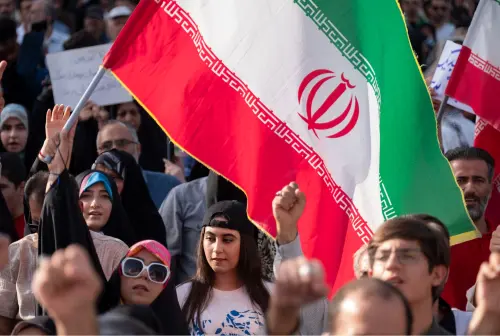
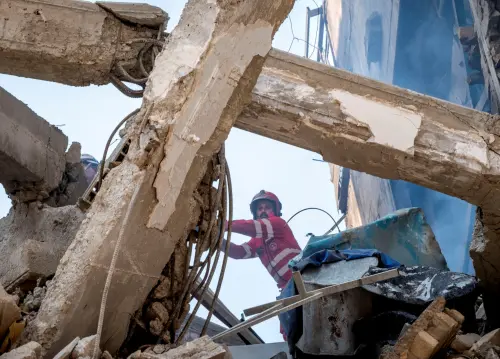
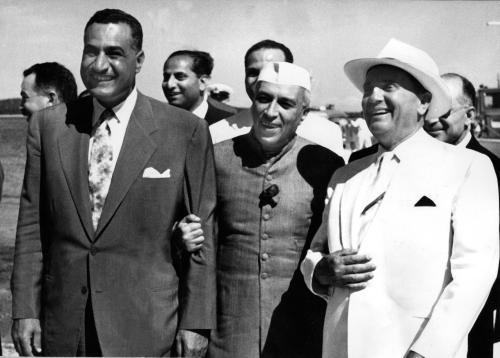
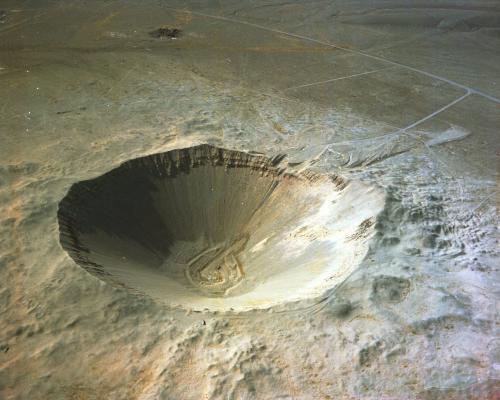
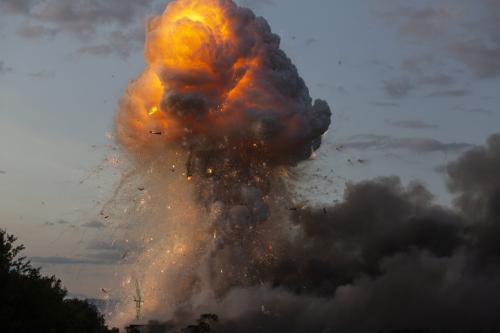
Commentary
PodcastHow do we know if US strikes on Iran’s nuclear facilities were successful?
Listen on
The Current Podcast
June 24, 2025